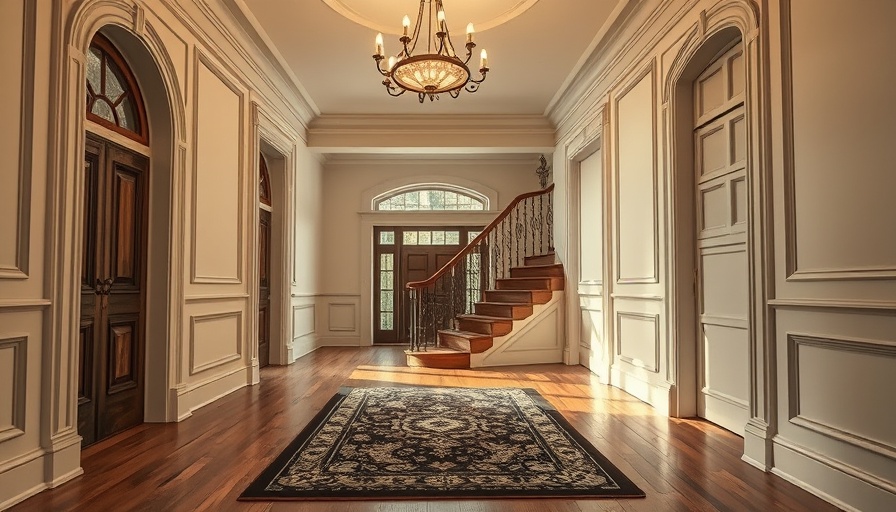
The Hidden Risks Within Your Home
When envisioning our homes, we often think of them as safe havens. However, everyday aspects can pose significant dangers, especially when it comes to slip-and-fall incidents. Every year, thousands of people suffer injuries from falls within their homes, leading to serious health complications that may take weeks or even months to recover from. Understanding how to mitigate these hazards is crucial not only for your safety but also for the safety of visitors and family alike.
Identifying Common Indoor Hazards
Indoor environments can harbor numerous potential risks, often unnoticed until an accident occurs. Several common hazards include:
- Wet Floors: Bathrooms and kitchens are frequent locations for slips due to spills, water from showers, or cooking.
- Loose Rugs: Unsecured rugs can easily become tripping hazards. Make sure they are either secured with anti-slip mats or removed altogether.
- Poor Lighting: Dimly lit areas can conceal obstacles. Ensure all pathways are well-lit, particularly staircases and hallways.
- Clutter: Items like children’s toys, shoes, or even cords can obstruct walkways, leading to dangerous falls.
By identifying these potential risks, you can take proactive measures to prevent falls and keep your home safe.
Outdoor Dangers: Your Garden and Walkways
It’s not just the indoors where slip-and-falls can happen; outdoor areas require careful attention too. Noticed some of these hazards around your yard?
- Uneven Surfaces: Garden pavers or pathways can become uneven over time, creating tripping risks.
- Slippery Decking: After rain or during wet seasons, wooden decks can become hazardous.
- Seasonal Hazards: Wet leaves can create slippery surfaces in fall, while snow and ice are obvious dangers in winter.
Maintenance of outdoor spaces—including regular inspection and repair of pathways, as well as ensuring adequate lighting—can significantly reduce the risk of falls in these areas.
Practical Improvements for Home Safety
According to advice from the Mayo Clinic, simple modifications can make a significant difference. Here are practical tips to enhance safety:
- Install Non-Slip Mats: Place mats near entryways, kitchens, and bathrooms to absorb moisture and provide traction.
- Enhance Lighting: Add additional light fixtures or night lights in dimly lit areas to illuminate steps and hallways.
- Clear Clutter: Keep pathways free from unnecessary items that could pose a tripping hazard.
- Secure Rugs and Carpets: Ensure rugs are either removed or secured with non-slip backing.
These changes are relatively simple but can prevent serious accidents.
Understanding Your Legal Rights
Despite all precautions, accidents may happen. If a slip and fall occurs due to negligence—be it in a home or a public property—understanding your rights is essential. According to legal experts, gathering evidence is crucial when pursuing compensation for your injuries. This could include:
- Photographs of the accident scene.
- Witness statements.
- Medical records.
Consulting with a slip-and-fall lawyer can help you navigate these situations, ensuring that you receive the support necessary for recovery.
Immediate Actions Post-Fall
If a fall occurs inside or outside your home, the first step is to assess the situation.
- Check for Injuries: Ensure the individual is safe and comfortable. Seek medical assistance if necessary.
- Document the Scene: Photographic evidence and detailed notes can help when discussing the accident or filing claims.
Being proactive and prepared can mitigate anxiety in stressful situations.
Final Thoughts: Prioritizing Safety in Your Home
The reality is that most slip-and-fall accidents can be prevented through diligent observation and minor home modifications. Whether you are a homeowner, renter, or someone frequently hosting visitors, creating a safe environment should be a top priority. In the unfortunate event of a slip-and-fall accident, knowing your rights allows you the assurance you need to focus on recovery. Consider taking steps today to enhance your home’s safety, and proactively protect your loved ones—and yourself—from potential hazards.
Don’t forget to reach out to local resources for help with home safety inspections or improvements. Your well-being is worth the effort!
 Add Row
Add Row  Add
Add 



Write A Comment